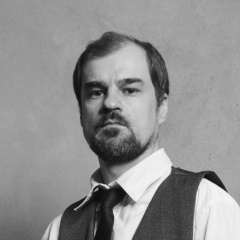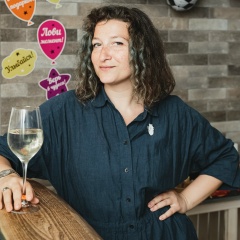Продолжаю изучать детали боевого пути полка двоюродного деда, командира взвода лейтенанта Александра Шувалова в боях в Германии на материалах, выложенных на "Памяти народа". И чем дальше углубляешься в леса Мекленбурга, тем больше интересного и зловещего выясняется.
Как следует из наградного деда 26 апреля 1945 года его взвод первым на своем участке форсировал канал Рандов и ворвался в немецкие траншеи. В ходе стремительного наступления сначала ночью 30 апреля он участвовал в бою у населенного пункта Крукув, а затем, как значится в наградном листе, освободил лагерь, обезоружив охрану и освободив около 2 тысяч советских и иностранных заключенных. Я предположил, что это мог быть либо женский концлагерь "Равенсбрюк", либо скорее всего один из его филиалов. Как оказалось, на пути стремительного продвижения 237 гвардейского полка на трофейном транспорте и самоходках СУ-76 в районе его наступления находилось как минимум 5 объектов, где находились узники нацистского режима. В двух фрагментах отчетной карты 70 армии я отметил красной линией продвижение полка деда от канала Рандов 26 апреля до Крукова и города Бютцов 3 мая 1945 года, а также черными кругами нацистские лагеря.
Взломав оборону немцев на канале Рандов и в городе Воллин 237 гвардейский полк вышел к городу Пренцлау. В ходе ожесточенного боя пройдя горящий город советские солдаты, поддерживаемые самоходками СУ-76, вышли на юго-западную окраину города. Здесь ими были освобождены около 500 заключенных лагеря для офицеров "Офлаг II Пренцлау". В том числе 33 бельгийских генерала, среди которых был начальник генерального штаба Франц Филе Оскар Минкельс. В районе Пренцлау также находился трудовой лагерь, являющийся филиалом "Равенсбрюка". Его точное местоположение непонятно и в советских документах он не упоминается. 237 гв. полк и самоходки продолжали стремительное наступление, прорывая оборону немцев и расчищая лесные завалы на своем пути. К 29-30 апреля они вели бои уже в районе озера Толлензе, южнее города Нойбранденбург. Южнее города, но севернее наступающего полка находились два концлагеря: филиал "Равенсбрюка" женский трудовой лагерь "Сталлелитейный завод Нойбранденбург (лесоводство)" и лагерь для военнопленных-рядовых "Шталаг II А". В документах они не упоминаются и вряд ли 237 гв. полк непосредственно участвовал в освобождении узников. Но, конечно же, его действия (а также соседнего 239 гв. полка) способствовали этому освобождению. Дальше советские бойцы продолжали стремительно продвигаться на северо-запад. В журнале боевых действий полка упомянут и Круков. 1 мая самоходчики еще где-то освободили 180 французских военнопленных. 3 мая бойцы 3 батальона полка, где служил дед, заняли город Бютцов. Здесь пехотинцы и самоходчики освободили политических заключенных городской тюрьмы. В наградном на командира самоходного полка подполковника Разувалова указано число заключенных - 7 тысяч. Немецкая Википедия пишет, что в 1944 году в тюрьме было 3 тысячи политзеков, 770 из них погибли. Тюрьма была серьезная, с гильотиной во дворе. Не совсем понятно, какой батальон полка мог с самоходчиками освободить тюрьму, но днем 3 мая 3/237 была введен в город и начал вести комендантскую службу. Кстати, это косвенно подтверждает рассказ бабушки, что ее брат был какое-то время комендантом немецкого города. Может и не самим комендантом был, но участвовал в комендантском управлении. В общем, если возвращаться к наградному, то этим лагерем мог быть либо "Офлаг II" в Пренцлау, либо тюрьма в Бютцове.
Как следует из наградного деда 26 апреля 1945 года его взвод первым на своем участке форсировал канал Рандов и ворвался в немецкие траншеи. В ходе стремительного наступления сначала ночью 30 апреля он участвовал в бою у населенного пункта Крукув, а затем, как значится в наградном листе, освободил лагерь, обезоружив охрану и освободив около 2 тысяч советских и иностранных заключенных. Я предположил, что это мог быть либо женский концлагерь "Равенсбрюк", либо скорее всего один из его филиалов. Как оказалось, на пути стремительного продвижения 237 гвардейского полка на трофейном транспорте и самоходках СУ-76 в районе его наступления находилось как минимум 5 объектов, где находились узники нацистского режима. В двух фрагментах отчетной карты 70 армии я отметил красной линией продвижение полка деда от канала Рандов 26 апреля до Крукова и города Бютцов 3 мая 1945 года, а также черными кругами нацистские лагеря.
Взломав оборону немцев на канале Рандов и в городе Воллин 237 гвардейский полк вышел к городу Пренцлау. В ходе ожесточенного боя пройдя горящий город советские солдаты, поддерживаемые самоходками СУ-76, вышли на юго-западную окраину города. Здесь ими были освобождены около 500 заключенных лагеря для офицеров "Офлаг II Пренцлау". В том числе 33 бельгийских генерала, среди которых был начальник генерального штаба Франц Филе Оскар Минкельс. В районе Пренцлау также находился трудовой лагерь, являющийся филиалом "Равенсбрюка". Его точное местоположение непонятно и в советских документах он не упоминается. 237 гв. полк и самоходки продолжали стремительное наступление, прорывая оборону немцев и расчищая лесные завалы на своем пути. К 29-30 апреля они вели бои уже в районе озера Толлензе, южнее города Нойбранденбург. Южнее города, но севернее наступающего полка находились два концлагеря: филиал "Равенсбрюка" женский трудовой лагерь "Сталлелитейный завод Нойбранденбург (лесоводство)" и лагерь для военнопленных-рядовых "Шталаг II А". В документах они не упоминаются и вряд ли 237 гв. полк непосредственно участвовал в освобождении узников. Но, конечно же, его действия (а также соседнего 239 гв. полка) способствовали этому освобождению. Дальше советские бойцы продолжали стремительно продвигаться на северо-запад. В журнале боевых действий полка упомянут и Круков. 1 мая самоходчики еще где-то освободили 180 французских военнопленных. 3 мая бойцы 3 батальона полка, где служил дед, заняли город Бютцов. Здесь пехотинцы и самоходчики освободили политических заключенных городской тюрьмы. В наградном на командира самоходного полка подполковника Разувалова указано число заключенных - 7 тысяч. Немецкая Википедия пишет, что в 1944 году в тюрьме было 3 тысячи политзеков, 770 из них погибли. Тюрьма была серьезная, с гильотиной во дворе. Не совсем понятно, какой батальон полка мог с самоходчиками освободить тюрьму, но днем 3 мая 3/237 была введен в город и начал вести комендантскую службу. Кстати, это косвенно подтверждает рассказ бабушки, что ее брат был какое-то время комендантом немецкого города. Может и не самим комендантом был, но участвовал в комендантском управлении. В общем, если возвращаться к наградному, то этим лагерем мог быть либо "Офлаг II" в Пренцлау, либо тюрьма в Бютцове.
I continue to study the details of the military route of the cousin’s regiment, platoon commander, Lieutenant Alexander Shuvalov in battles in Germany on materials laid out in the Memory of the People. And the further you delve into the forests of Mecklenburg, the more interesting and sinister it turns out.
As follows from the award grandfather on April 26, 1945, his platoon was the first in his sector to force the Randov Canal and burst into German trenches. During the swift offensive, at first on the night of April 30, he participated in the battle near the village of Kruków, and then, as indicated on the award sheet, vacated the camp, disarmed the guards and freed about 2 thousand Soviet and foreign prisoners. I suggested that it could be either the Ravensbrück women's concentration camp, or most likely one of its branches. As it turned out, on the way to the rapid advance of the 237th Guards Regiment in trophy vehicles and self-propelled guns SU-76 in the area of its offensive there were at least 5 objects where prisoners of the Nazi regime were. In two fragments of the 70 army report card, I marked the red line as the advancement of my grandfather’s regiment from the Randov Canal on April 26 to Krukov and the city of Buttsov on May 3, 1945, as well as the Nazi camps in black circles.
Hacking the German defenses on the Randow Canal and in the city of Wollin, the 237th Guards regiment went to the city of Prenzlau. During a fierce battle, passing the burning city, Soviet soldiers, supported by self-propelled guns SU-76, reached the southwestern outskirts of the city. Here they released about 500 prisoners from the Oflag II Prenzlau officers camp. Including 33 Belgian generals, among whom was the chief of the General Staff Franz Filet Oscar Minkels. There was also a labor camp in the Prenzlau area, which is a branch of Ravensbrück. Its exact location is not clear and is not mentioned in Soviet documents. 237 guards the regiment and self-propelled guns continued their rapid offensive, breaking through the German defenses and clearing the forest debris on its way. By April 29-30, they fought in the area of Lake Tollensee, south of the city of Neubrandenburg. To the south of the city, but to the north of the advancing regiment, there were two concentration camps: the Ravensbrück branch, the Neubrandenburg Steel Mill (forestry) women's labor camp, and the Stalag II A prison camp. They are not mentioned in documents and hardly 237 guards. the regiment was directly involved in the release of prisoners. But, of course, his actions (as well as the neighboring 239th Guards regiment) contributed to this release. Further, Soviet fighters continued to advance rapidly to the northwest. Krukov is also mentioned in the regiment’s combat journal. On May 1, self-propelled guns still released 180 French prisoners of war somewhere. On May 3, soldiers of the 3rd battalion of the regiment where the grandfather served occupied the city of Buttsov. Here, infantrymen and self-propelled gunmen released the political prisoners of the city prison. The prize for the commander of a self-propelled regiment of Lieutenant Colonel Razuvalov indicates the number of prisoners - 7 thousand. German Wikipedia writes that in 1944 there were 3 thousand political prisoners in prison, 770 of them died. The prison was serious, with a guillotine in the yard. It is not entirely clear which battalion of the regiment could have freed the prison with self-propelled guns, but on the afternoon of May 3, 3/237 was introduced into the city and began to conduct commandant service. By the way, this indirectly confirms the story of the grandmother that her brother was for some time the commandant of the German city. Maybe he wasn’t the commandant himself, but he participated in the commandant’s command. In general, if you return to the prize, then this camp could be either Oflag II in Prenzlau, or a prison in Buttsovo.
As follows from the award grandfather on April 26, 1945, his platoon was the first in his sector to force the Randov Canal and burst into German trenches. During the swift offensive, at first on the night of April 30, he participated in the battle near the village of Kruków, and then, as indicated on the award sheet, vacated the camp, disarmed the guards and freed about 2 thousand Soviet and foreign prisoners. I suggested that it could be either the Ravensbrück women's concentration camp, or most likely one of its branches. As it turned out, on the way to the rapid advance of the 237th Guards Regiment in trophy vehicles and self-propelled guns SU-76 in the area of its offensive there were at least 5 objects where prisoners of the Nazi regime were. In two fragments of the 70 army report card, I marked the red line as the advancement of my grandfather’s regiment from the Randov Canal on April 26 to Krukov and the city of Buttsov on May 3, 1945, as well as the Nazi camps in black circles.
Hacking the German defenses on the Randow Canal and in the city of Wollin, the 237th Guards regiment went to the city of Prenzlau. During a fierce battle, passing the burning city, Soviet soldiers, supported by self-propelled guns SU-76, reached the southwestern outskirts of the city. Here they released about 500 prisoners from the Oflag II Prenzlau officers camp. Including 33 Belgian generals, among whom was the chief of the General Staff Franz Filet Oscar Minkels. There was also a labor camp in the Prenzlau area, which is a branch of Ravensbrück. Its exact location is not clear and is not mentioned in Soviet documents. 237 guards the regiment and self-propelled guns continued their rapid offensive, breaking through the German defenses and clearing the forest debris on its way. By April 29-30, they fought in the area of Lake Tollensee, south of the city of Neubrandenburg. To the south of the city, but to the north of the advancing regiment, there were two concentration camps: the Ravensbrück branch, the Neubrandenburg Steel Mill (forestry) women's labor camp, and the Stalag II A prison camp. They are not mentioned in documents and hardly 237 guards. the regiment was directly involved in the release of prisoners. But, of course, his actions (as well as the neighboring 239th Guards regiment) contributed to this release. Further, Soviet fighters continued to advance rapidly to the northwest. Krukov is also mentioned in the regiment’s combat journal. On May 1, self-propelled guns still released 180 French prisoners of war somewhere. On May 3, soldiers of the 3rd battalion of the regiment where the grandfather served occupied the city of Buttsov. Here, infantrymen and self-propelled gunmen released the political prisoners of the city prison. The prize for the commander of a self-propelled regiment of Lieutenant Colonel Razuvalov indicates the number of prisoners - 7 thousand. German Wikipedia writes that in 1944 there were 3 thousand political prisoners in prison, 770 of them died. The prison was serious, with a guillotine in the yard. It is not entirely clear which battalion of the regiment could have freed the prison with self-propelled guns, but on the afternoon of May 3, 3/237 was introduced into the city and began to conduct commandant service. By the way, this indirectly confirms the story of the grandmother that her brother was for some time the commandant of the German city. Maybe he wasn’t the commandant himself, but he participated in the commandant’s command. In general, if you return to the prize, then this camp could be either Oflag II in Prenzlau, or a prison in Buttsovo.
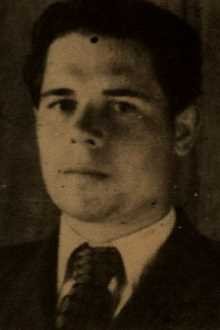


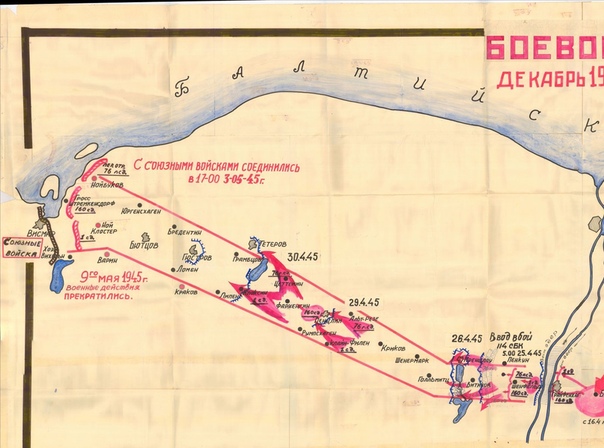
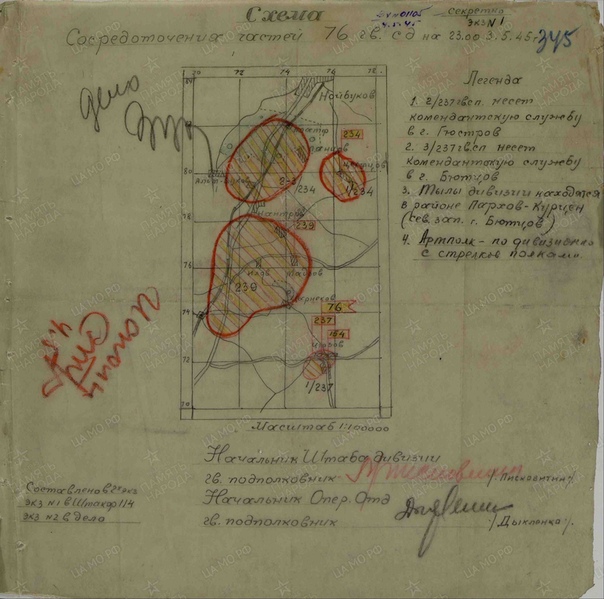
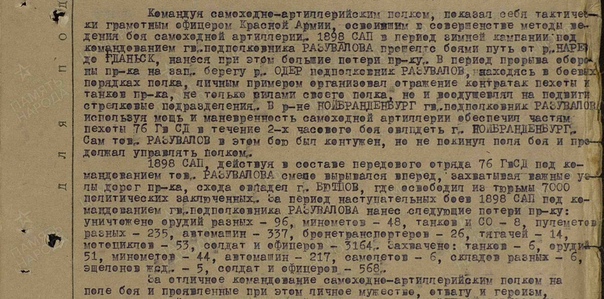
У записи 21 лайков,
0 репостов,
561 просмотров.
0 репостов,
561 просмотров.
Эту запись оставил(а) на своей стене Константин Макаров

